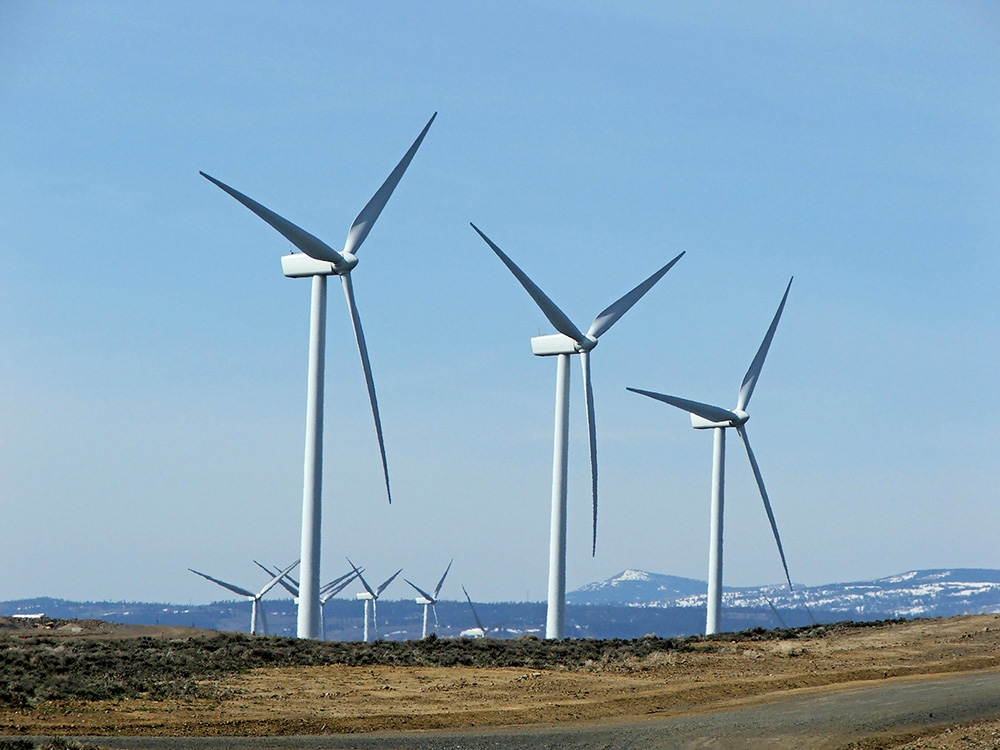Renewable energy projects run by First Nations could help B.C. power through the climate crisis, but government roadblocks threaten their participation, says a recent report from the Pembina Institute and the New Relationship Trust.
“I really wanted to help First Nations put out a First Nations’ perspective on energy planning,” said Cole Sayers, director of clean energy initiatives at the New Relationship Trust, a non-profit organization supporting First Nations’ governance, and a contributor to the project. “We wanted to make it easy for government to say, ‘Here's some policy options that can be implemented right now, and these are what First Nations want.’”
The report found that First Nations owned, operated or co-partnered renewable energy projects that generate 13 per cent of B.C.’s electricity — an amount more than the future output of the Site C dam.
Non-storage run-of-river projects make up the majority of First Nations’ renewable energy projects in B.C., and wind energy comes in second at 30 per cent. The report adds that for new projects investment possibilities in wind and solar are increasing.
Many of those projects were spurred on decades ago through a BC Hydro program that provided contracts for small power projects selling to the provincial electrical grid.
That program was suspended indefinitely in 2019 by the NDP government, which cited the oversupply of power and the high costs of independent power contracts. With limited opportunities to sell power on BC Hydro’s power lines, small-power projects face an uncertain future.
“All the policy windows have closed,” said Dave Lovekin, director of renewables in remote communities at the Pembina Institute and the report’s lead author. “There's no way for these projects to get built.”
The report argues that B.C.’s climate targets require 19 to 34 per cent more electricity than the province has committed to buy in order to shift to cleaner energy production.
It also says that costs of independently produced power is slated to drop alongside the falling costs of renewables.
If First Nations’ renewable energy projects provided just half that amount of energy, Lovekin and his co-authors say, that production would create 10,000 full- and part-time jobs for First Nations and generate $8.25 billion in private investment.
“There are so many benefits,” said Sayers, who adds that locally produced energy can provide a stable source of power in the face of unstable weather patterns. “In my mind it’s decarbonizing the grid. It's a clean source of electricity that comes to First Nations that doesn't come from violating our rights.”
Putting First Nations in the lead on power production is critical given B.C.’s commitments to the Declaration on the Rights of Indigenous Peoples Act established in the fall of 2019, which ensures that Indigenous peoples can determine the priorities for development or use of their lands and territories.
The report cites a 2017 survey which found 98 per cent of First Nations communities in B.C. who responded want to participate in renewable energy production.
In an emailed statement to The Tyee, the Ministry of Energy, Mines and Low Carbon Innovation said the province has proposed “to engage with First Nations to identify and support new clean energy opportunities for Indigenous peoples including, but not limited to, electricity generation.”
Sayers and the report’s authors say that BC Hydro’s energy planning is putting obstacles in the path of Indigenous-led power production.
Hydro hindrance
Every five years, BC Hydro forecasts how much energy the province will need, and where it will get that energy from over the next two decades. Following delays, work on that plan is now underway for the first time in eight years.
In July, BC Hydro released a draft of its integrated resource plan, forecasting a decade-long energy surplus. The plan states that new electricity generation won’t be required until 2030.
The ministry statement said BC Hydro would be unwise to purchase more power than it needs, since such a move would “increase BC Hydro rates and make it more expensive for households, communities and businesses to switch from natural gas to clean electricity.”
But the Pembina Institute and New Relationship Trust report’s authors say that BC Hydro’s projected surplus ignores climate action and the additional electrical production it requires.
If B.C. ramps up its electrification to meet its 2030 climate targets, the authors argue that B.C. will require a significant increase in clean electrical power production.
The discrepancy between the province’s energy plans and its legislated climate targets is a problem, says Tom-Pierre Frappé-Sénéclauze, director for buildings and urban solutions for the Pembina Institute, who said there is a “disconnect between what we say we want to do politically, and what the institutions’ instructions are.”
The province’s utility regulator, the BC Utilities Commission, is not mandated to make climate change a priority when it assesses resource plans against other interests such as power rates.
Without clear climate policy signals from the provincial government that make B.C.’s climate targets feasible, the utilities commission cannot require BC Hydro to secure more energy to address climate change, said Frappé-Sénéclauze. “If the utility is not seeing the policy or the market signals for all that extra demand to come, they would be imprudent to build it just because we should really have it.”
But that lack of foresight is out of sync with the climate crisis, says Frappé-Sénéclauze. “The one thing that we do know with climate change is that we need radical change in the next five years and 10 years if we’re going to meet our climate targets.”
Climate action appears in BC Hydro’s draft plan but is described in a separate “contingency scenario” in which B.C. meets its legislated climate targets. That scenario forecasts new demand for electricity as early as 2025.
Instead of drawing on new First Nations renewable energy projects, the BC Hydro plan suggests buying power from the U.S. to make up any shortfall until new, potentially B.C.-based supply comes online in 2030.
Power purchased from the U.S. on the spot-market and not through long-term contracts is often cheap, but also tends to be unpredictable in the face of extreme weather and market fluctuations, says the Pembina Insitute and New Relationship Trust report, adding that prices on imported electricity could fluctuate widely in the coming years.
Power imported from the U.S. also comes from a range of sources, including coal, gas, wind and solar. Because the electricity is consolidated when transported in power lines, it’s impossible to know how a given unit of energy was produced. That means that imported power might not be green, according to Lovekin. “It comes with unknown climate implications,” he said.
The report says imported power could put First Nations’ renewable energy projects at the back of the line when it comes to supplying energy to the province.
The BC Hydro draft plan promises to renew energy supply contracts with independent power producers (including First Nations’ projects) that are set to expire within the next five years at a “market rate.”
Whether that market rate can sustain those projects is less certain, said Lovekin. “It's kind of unknown,” he said. “It hinges on what rates are going to be offered for those projects.”
Sayers’s own community, the Hupačasath, on the west coast of Vancouver Island, owns a run-of-river project whose contract will be up for renewal in 2025.
For communities that don’t have contracts established with BC Hydro, the future is even bleaker.
The Pembina Institute and New Relationship Trust report notes that there are at least 13 First Nations' renewable energy projects that are “shovel ready,” but they cannot move forward without a signal from the provincial government that their power could be sold.
Having faced an uphill battle trying to support grid-connected renewable projects over the years, Sayers is frustrated with the province’s continued inaction.
“In my perspective it’s systemic discrimination,” he said. “They want to have these big projects like Site C... to provide cheap power they can sell, and they don’t want to have other players in the game.”
That approach doesn’t acknowledge the colonial impacts of B.C.’s electricity system which was made possible by damming and flooding Indigenous lands, said Sayers. “We’re not a private power. We’re First Nations. We have our own values around how we want to produce power and sell power.”
The report said BC Hydro consulted with 64 First Nations on its draft plan. This fall, the province will undertake another series of consultations.
Sayers sees the report as one step among many towards a larger goal. “It's kind of like a small effort to collectivize our voice,” he said.
Along with other nations, Sayers has his sights on a larger initiative to create a First Nations Power Authority to work as an intermediary between First Nations and BC Hydro. It would advocate for nations’ interests when it comes to energy policy and facilitate nations’ ability to sell their power.
“It's an industry that First Nations want to be involved in,” Sayers said. ![]()
Read more: Indigenous, Energy, Environment
















Tyee Commenting Guidelines
Comments that violate guidelines risk being deleted, and violations may result in a temporary or permanent user ban. Maintain the spirit of good conversation to stay in the discussion and be patient with moderators. Comments are reviewed regularly but not in real time.
Do:
Do not: